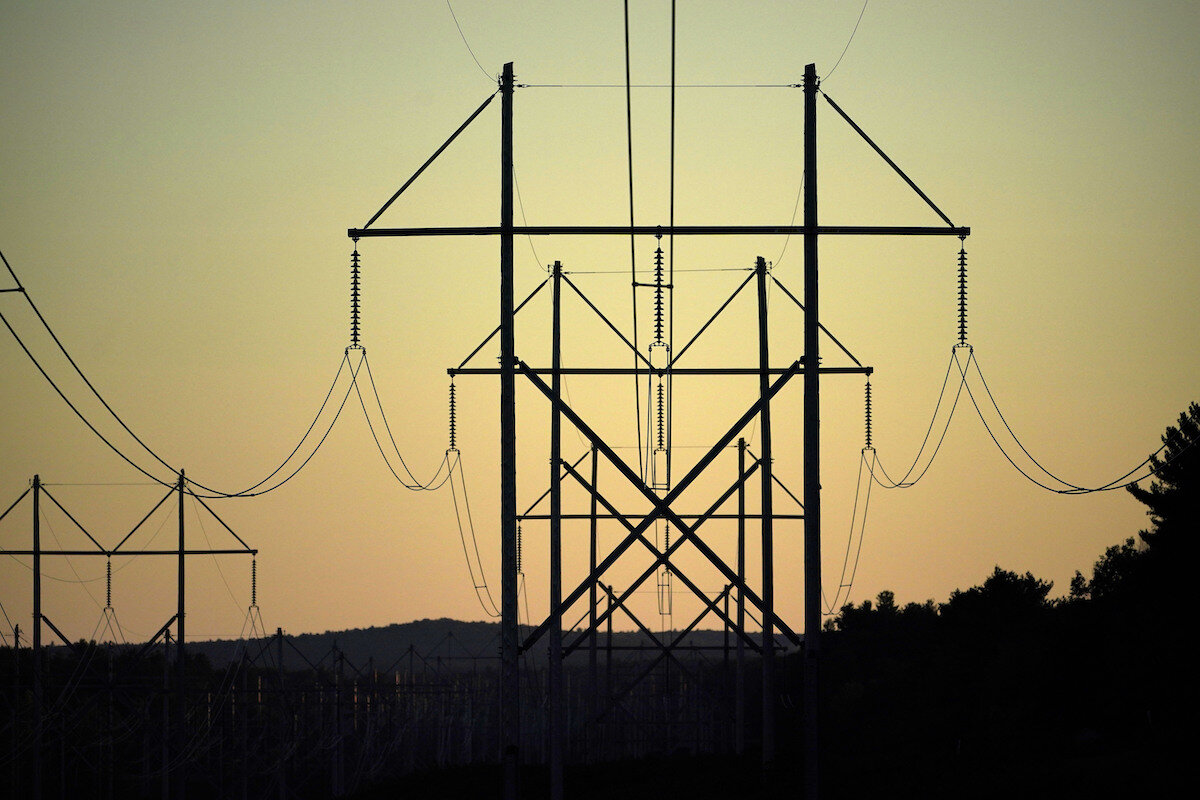The missing link: Energy panel opens the way for more renewables on the US grid
Loading...
| Washington
Federal energy regulators on May 13 approved a long-awaited rule to make it easier to transmit renewable energy such as wind and solar power to the electric grid – a key part of President Joe Biden’s goal to eliminate carbon emissions economy-wide by 2050.
The rule, under development for two years, is aimed at boosting the nation’s aging power grid to meet surging demand fueled by huge data centers, electrification of vehicles and buildings, artificial intelligence, and other uses.
The increased demand comes as coal-fired power plants continue to be retired amid competition from natural gas, and other energy sources face increasingly strict federal pollution rules, setting up what experts say could be a crisis for electric reliability.
The grid is also being tested by more frequent service disruptions during extreme weather events driven by climate change.
The Federal Energy Regulatory Commission approved the new rule, 2-1, with Chairman Willie Phillips and fellow Democratic commissioner Allison Clements voting in favor. Republican Mark Christie opposed the rule, dismissing it as a gift to solar and wind power operators.
The sprawling, 1,300-page rule, which addresses transmission planning and cost allocations, will enhance the country’s aging grid and ensure U.S. homes and businesses keep the lights on for decades to come, Mr. Phillips said.
“This rule cannot come fast enough,’’ he said at a packed commission meeting at the agency’s Washington headquarters. “There is an urgent need to act to ensure the reliability and the affordability of our grid.’’
The U.S. power grid “is at a make-or-break moment’’ and is being tested every day, Mr. Phillips said, citing “phenomenal load-growth from a domestic manufacturing boom, unprecedented construction of data centers fueling an AI revolution and ever-expanding electrification” of vehicles and buildings.
At the same time, aging infrastructure, shifting economics, and a range of state and federal policies are leading traditional resources to retire, he said. “On top of all of this, extreme weather events have become the norm, and the electric grid is routinely being pushed to the brink.’’
At the same time, construction of high-voltage power lines declined to a record low in 2022, “and much of that construction was simply Band-Aid fixes, rather than building a visionary grid of the future,’’ Mr. Phillips said.
Many power companies and Republican-led states don’t want to spend money on new transmission lines or upgrades for renewable energy, creating conflicts with Democratic states that have ambitious clean-energy goals.
Mr. Christie, the lone Republican on the three-member panel, said the rule “utterly fails to protect consumers” and ensure reliable, low-priced power for American homes and businesses.
“Instead, this rule is a pretext to enact a sweeping policy agenda that Congress never passed,” he said. The rule will likely result in “a massive transfer of wealth from consumers to for-profit special interests,” primarily wind and solar operators, he said.
The rule is intended to streamline how power lines are sited and how costs are shared between states. It could accelerate construction of new transmission lines for wind, solar, and other renewable power and add huge amounts of clean energy to the grid. Mr. Biden has set a goal of a carbon-free power sector by 2035, and net-zero carbon emissions economy-wide by 2050.
To meet those targets, the U.S. needs to more than double current regional transmission capacity and increase by five-fold the transmission lines between regions, according to an Energy Department study last year.
Under current rules, a large queue of utility-scale renewables cannot be connected to the grid because of a lack of available transmission capacity. The rule updates the agency’s planning process and seeks to determine how costs will be divided when transmission crosses state lines and goes through multiple operators of regional power grids.
White House climate adviser Ali Zaidi said the FERC rule adds momentum to what he called the “historic progress” led by Mr. Biden on clean energy. The new rule “will improve regional transmission planning, break down barriers to grid buildout and support the delivery of more affordable and reliable power,” Mr. Zaidi said.
The new rule “is as common-sense as it is historic,’’ Ms. Clements said, adding that it calls for more advanced planning and consideration of reliability and affordability of new power sources and fosters cooperation with states.
“Whether you’re planning a family vacation or the nation’s electricity system, planning early, taking a clear-eyed view of the options and making smart investment decisions will result in more affordable and reliable outcomes,’’ she said.
Mr. Christie challenged the agency action.
Whether the policies promoted in the final rule “can be described as green, purple, red or blue is irrelevant,’’ Mr. Christie said. “The point is that FERC as an independent agency has no business promoting the policies of any one party or presidential administration, especially when the effort to do so goes far beyond FERC’s legal authority.’’
Ms. Clements responded by calling the rule “straight down the middle’’ as a legal matter.
Democrats and clean-energy advocates hailed the new rule as a way to bring clean and cost-effective electricity onto the grid.
“Building more multi-state transmission lines unclogs the traffic jams on America’s electricity superhighways and unlocks our ability to keep up with our growing energy needs,’’ said Heather O’Neill, president and CEO of Advanced Energy United, which represents renewable providers.
Senate Majority Leader Chuck Schumer, D-N.Y., said the rule will build on clean-energy incentives in the landmark climate law approved by Democrats in 2022.
The law, known as the Inflation Reduction Act, has been “a huge success,’’ Mr. Schumer said May 13, “but much of that success would be lost without the ability to bring power from places that generate renewable energy to communities all across the country.’’ FERC’s actions “will mean more low-cost, reliable clean energy for the places that need it most,’’ he said.
This story was reported by The Associated Press.




